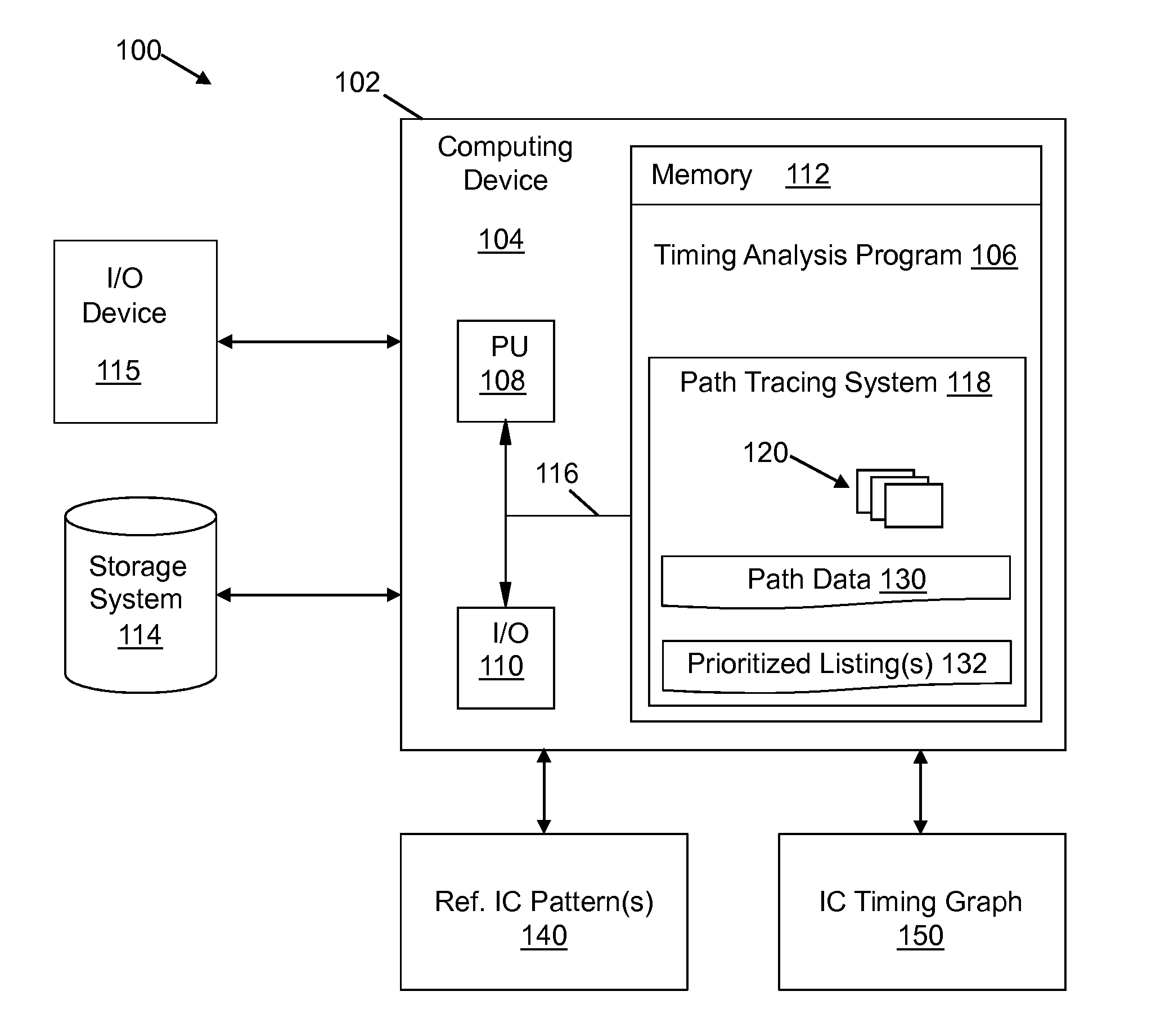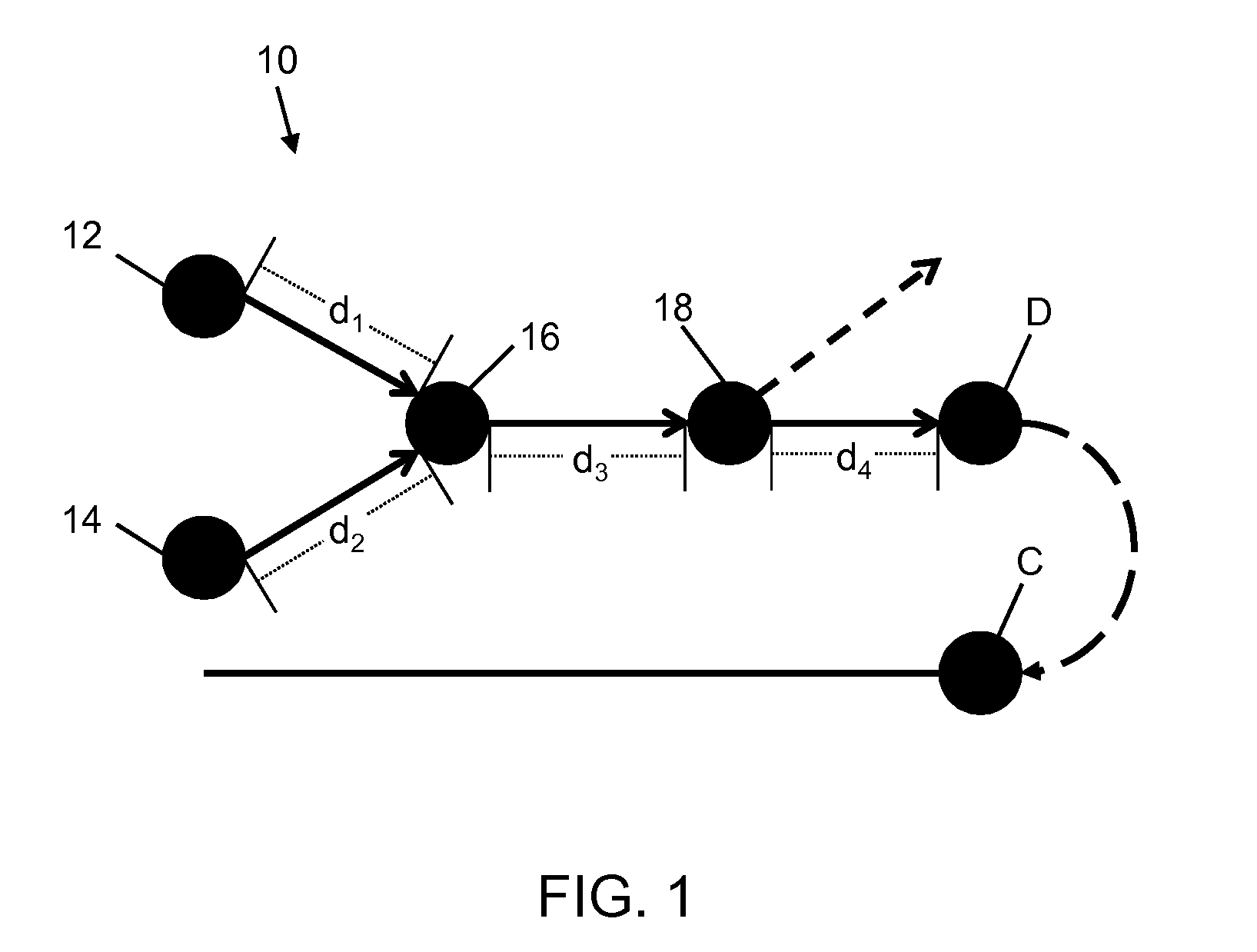Prioritized path tracing in statistical timing analysis of integrated circuits
a timing analysis and priority technology, applied in the field of priority path tracing in statistical timing analysis of integrated circuits, can solve the problems of overly optimistic and misleading optimization tools, introduce a new dimension of complexity in statistical macro-modeling, and achieve the effect of improving the accuracy of statistical macro-models
- Summary
- Abstract
- Description
- Claims
- Application Information
AI Technical Summary
Benefits of technology
Problems solved by technology
Method used
Image
Examples
Embodiment Construction
[0019]In the following description, reference is made to the accompanying drawings that form a part thereof, and in which is shown by way of illustration specific exemplary embodiments in which the present teachings may be practiced. These embodiments are described in sufficient detail to enable those skilled in the art to practice the present teachings, and it is to be understood that other embodiments may be used and that changes may be made without departing from the scope of the present teachings. The following description is, therefore, merely illustrative.
INTRODUCTION AND GENERAL DEFINITIONS
[0020]Critical path tracing is a fundamental operation in static timing analysis of an integrated circuit (IC) to provide functions such as reporting, common path pessimism removal (CPPR), etc. Path tracing conventionally includes a backwards traversal of the timing graph, e.g., beginning at an end point of the timing graph and tracing back to one or more signal sources. In the event that a...
PUM
 Login to View More
Login to View More Abstract
Description
Claims
Application Information
 Login to View More
Login to View More - R&D
- Intellectual Property
- Life Sciences
- Materials
- Tech Scout
- Unparalleled Data Quality
- Higher Quality Content
- 60% Fewer Hallucinations
Browse by: Latest US Patents, China's latest patents, Technical Efficacy Thesaurus, Application Domain, Technology Topic, Popular Technical Reports.
© 2025 PatSnap. All rights reserved.Legal|Privacy policy|Modern Slavery Act Transparency Statement|Sitemap|About US| Contact US: help@patsnap.com



